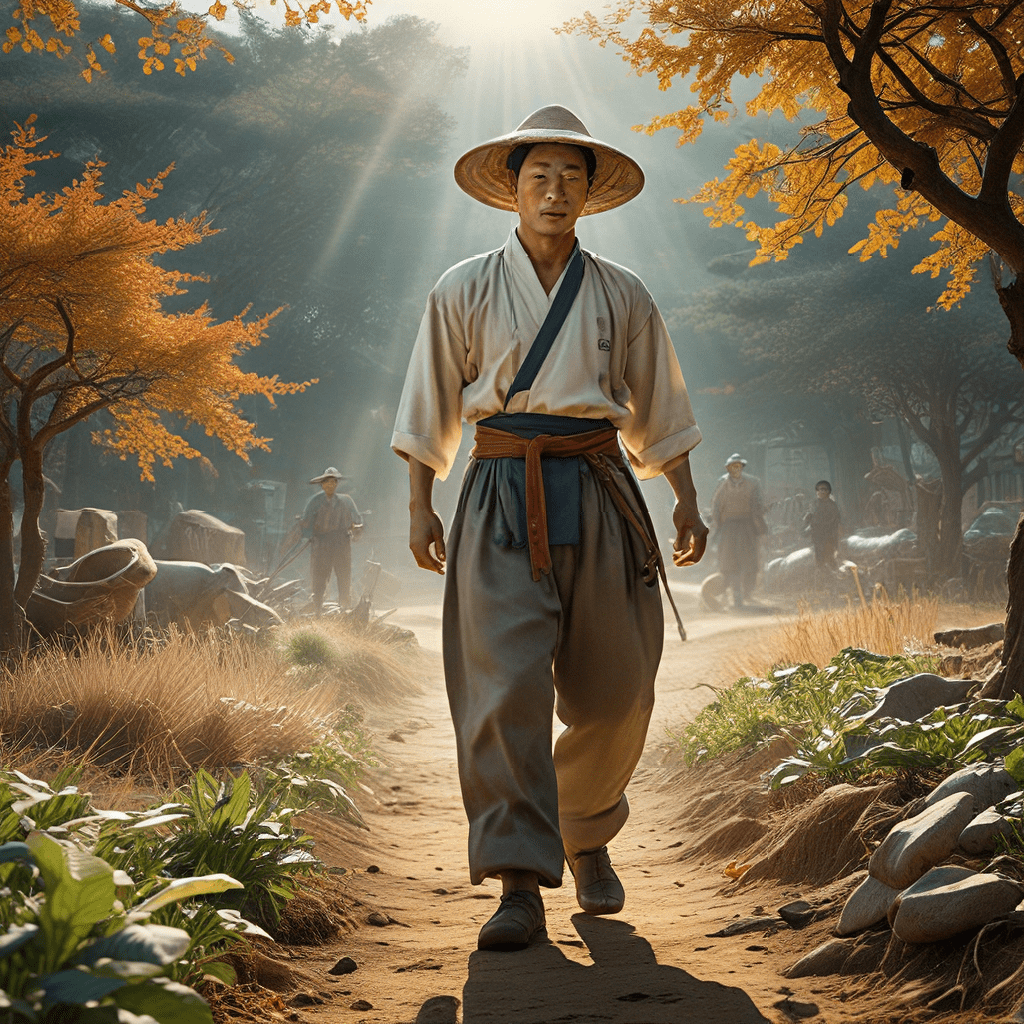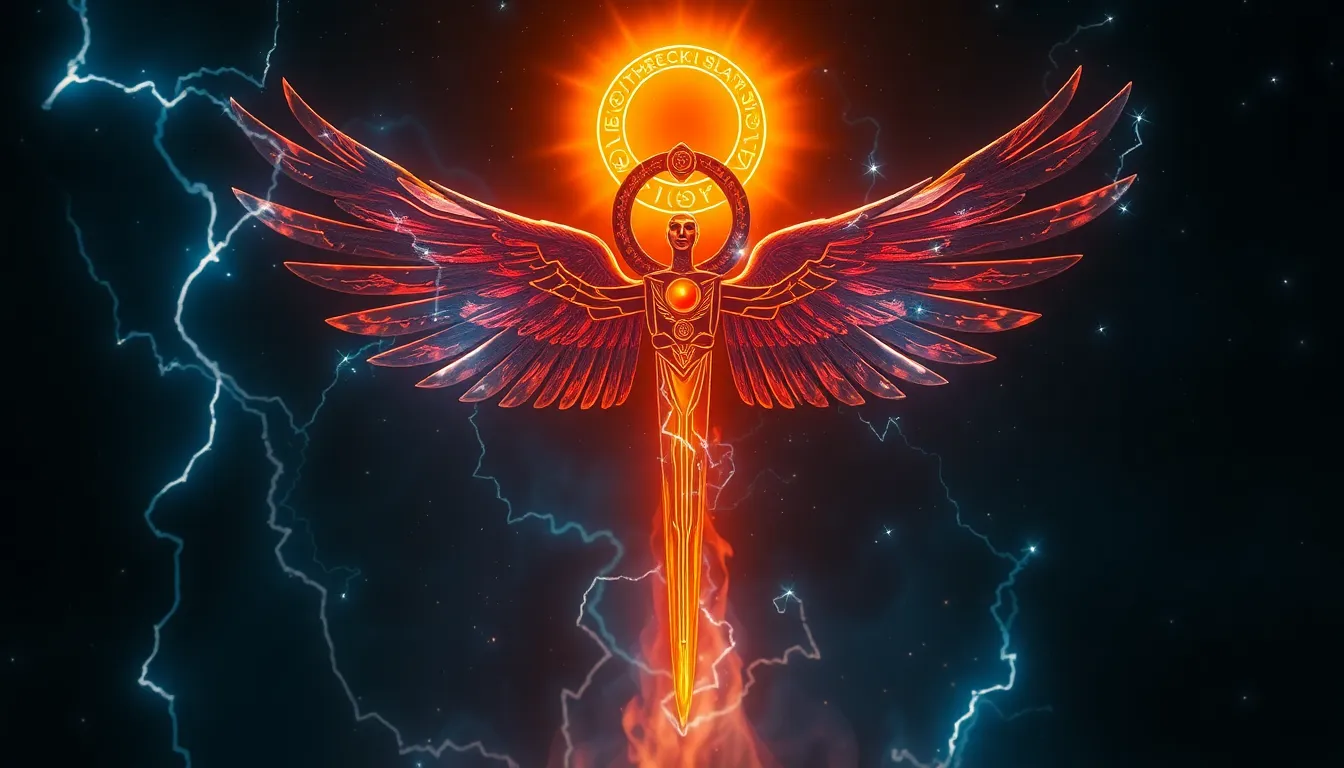Korean Folklore: Unraveling the Legend of the Divine Farmer
1. The Origins of Korean Agriculture: From Myth to Reality
The story of how Koreans began to cultivate the land is deeply rooted in folklore, and no figure is more central to this narrative than the Divine Farmer. This mythical figure, often referred to as 'Nongga', holds a special place in Korean mythology, representing the transition from a hunter-gatherer society to one reliant on agriculture. The Divine Farmer is believed to have brought knowledge of farming techniques, introduced new crops, and ushered in an era of abundance and prosperity.
While the myth of the Divine Farmer provides a foundational tale for Korean agriculture, its origins are firmly anchored in the realities of life in ancient Korea. The peninsula's diverse geography, with its fertile plains, hilly regions, and abundant rivers, provided fertile ground for early agricultural practices. The development of rice cultivation, a cornerstone of the Korean diet, is believed to have emerged around 4,000 years ago, coinciding with the emergence of settled communities and the rise of sophisticated farming techniques.
The transition to agriculture was a monumental shift in Korean society, transforming the way people lived, interacted, and organized themselves. This shift from nomadic lifestyles to settled agrarian societies witnessed the development of villages, the rise of social hierarchies, and the emergence of distinct cultural traditions. The Divine Farmer, within this context, embodies the ingenuity, resilience, and transformative power of the Korean people.
2. The Divine Farmer: A Figure of Creation and Transformation
The Divine Farmer, a revered figure in Korean mythology, is often portrayed as a benevolent, wise, and powerful being. The Divine Farmer's role in Korean mythology is multifaceted, encompassing the creation of the land itself, the introduction of essential crops, and the transformation of humans from hunter-gatherers to cultivators.
The Divine Farmer is often depicted as a figure of immense strength and wisdom, capable of wielding elemental forces to shape the land. They are credited with creating fertile valleys, carving out rivers, and bringing forth the first seeds. This powerful and creative force of the Divine Farmer represents the inherent power of nature and the importance of harnessing its potential for human prosperity.
The Divine Farmer is not simply a creator but also a teacher, sharing knowledge and skills with the people. The Divine Farmer is said to have taught early Koreans how to cultivate rice, tend to livestock, and use tools to improve their farming techniques. This transmission of knowledge, passed down through generations, is fundamental to the Divine Farmer's legacy as a figure of cultural and agricultural enlightenment.
3. The Role of the Divine Farmer in Korean Mythology: Bringing Order to Chaos
The story of the Divine Farmer is also a reflection of the desire for order, stability, and prosperity in a world often perceived as chaotic. Before the arrival of the Divine Farmer, Korea is often depicted as a wild and unruly place, where the land was untamed, and resources were scarce. The Divine Farmer, by introducing agriculture, brought order and structure to this chaotic world.
The act of cultivation itself – the meticulous planting of seeds, the careful tending of crops, and the harvesting of the bounty – reflects the desire for control and stability. The Divine Farmer’s introduction of farming practices not only provided sustenance but also established a framework for organized living, fostering community and social cohesion.
The Divine Farmer's arrival marks a shift from a state of uncertainty and dependence on nature's whims to a more secure and predictable way of life. The myth of the Divine Farmer resonates with the enduring human desire for stability and control over their environment, a theme that continues to echo in Korean culture.
4. The Divine Farmer as a Symbol of Korean Identity: Connecting to the Land
The Divine Farmer is more than just a mythical figure; they are a symbol of Korean identity, embodying the close connection between the Korean people and their land. The myth of the Divine Farmer underscores the importance of agriculture in shaping Korean culture, values, and traditions.
The Divine Farmer's legacy continues to inspire Koreans today, reminding them of their agrarian heritage and their deep connection to the land. The reverence for rice cultivation, the emphasis on seasonal festivals celebrating the harvest, and the enduring belief in the importance of family and community can be traced back to the teachings of the Divine Farmer.
The myth of the Divine Farmer serves as a powerful reminder of the Korean people's resilience, resourcefulness, and ability to overcome challenges. It reinforces the importance of community, cooperation, and the enduring power of nature in shaping Korean culture and identity.
5. Essential Elements of the Divine Farmer Myth: From Seed to Harvest
The Divine Farmer myth is rich in symbolism, drawing on the natural cycles of life and the essential tasks of farming. The core elements of the myth illustrate the steps involved in the agricultural process and the importance of each stage in achieving a bountiful harvest.
The Seed: The Divine Farmer often brings with them the first seeds, representing the potential for life and the promise of abundance. The seed symbolizes hope, renewal, and the transformative power of nature.
Cultivation: The Divine Farmer teaches the people how to prepare the land, plant the seeds, and tend to the growing crops. This represents the human effort and ingenuity required to cultivate and nurture life.
Harvest: The myth culminates in a successful harvest, signifying the rewards of hard work, perseverance, and respect for nature. The abundance of the harvest represents prosperity, community, and the interconnectedness of life.
The Divine Farmer myth, through its focus on these central elements, reinforces the importance of agricultural practices, the cyclical nature of life, and the interconnectedness of humans and the natural world.
6. Variations of the Divine Farmer Myth: Different Regions, Different Tales
While the central figure of the Divine Farmer remains consistent across various Korean folk tales, the specific details and elements of the myth vary depending on the region and the local traditions. This regional diversity reflects the unique geographical features, agricultural practices, and cultural beliefs of different parts of Korea.
In some versions of the myth, the Divine Farmer is a male figure, often associated with the creation of rice cultivation. Other versions depict the Divine Farmer as a female figure, emphasizing the role of women in traditional Korean agriculture. This diversity in gender representation highlights the importance of both men and women in shaping Korean agricultural history.
The specific crops brought by the Divine Farmer also differ depending on the region. In some versions, the Divine Farmer introduces rice cultivation, while in others, they are credited with bringing millet, barley, or other essential crops. This variation reflects the diverse agricultural practices that developed in different parts of Korea, adapting to local climates and soil conditions.
These variations illustrate the dynamic and evolving nature of Korean folklore. The myth of the Divine Farmer is not a static story but a living tradition, constantly being shaped and reinterpreted by communities across Korea.
7. The Divine Farmer as a Source of Agricultural Wisdom: Legends and Practicality
The myth of the Divine Farmer is not just a story but also a source of practical agricultural wisdom, passed down through generations of Korean farmers. The tales about the Divine Farmer, often intertwined with real-life experiences and observations, offer valuable insights into traditional farming techniques, crop management, and the importance of respecting nature.
The Divine Farmer's teachings, embedded in the myth, are a testament to the long-standing tradition of knowledge sharing and the importance of preserving agricultural practices. These teachings, often passed down orally from generation to generation, cover a wide range of topics, including:
- Seed Selection: The importance of choosing the right seeds for specific soil types and climates, ensuring optimal growth and yields.
- Sowing and Planting: The ideal timing and methods for sowing seeds, considering the lunar calendar and weather patterns.
- Water Management: Techniques for irrigating crops effectively, ensuring adequate water supply, and preventing waterlogging.
- Harvesting and Storage: The best practices for harvesting crops at their peak ripeness and storing them for extended periods.
- Crop Rotation and Soil Fertility: The value of rotating crops to maintain soil fertility and prevent depletion of nutrients.
These practical insights, woven into the myth of the Divine Farmer, have played a crucial role in ensuring the success of Korean agriculture for centuries. The legend provides a framework for understanding the complex relationship between humans and nature, highlighting the importance of respecting the environment and working in harmony with its cycles.
8. The Divine Farmer in Modern Korean Culture: A Lasting Legacy
The myth of the Divine Farmer continues to hold significance in modern Korean culture, resonating with people from diverse backgrounds and reflecting the enduring legacy of agriculture in Korean society.
The Divine Farmer's story is reflected in various aspects of Korean culture:
- Art and Literature: The Divine Farmer is a recurring theme in Korean art, literature, and storytelling, often depicted in paintings, sculptures, and traditional folk tales.
- Festivals and Celebrations: The annual harvest festivals, such as Chuseok, are a tribute to the Divine Farmer's legacy, celebrating the fruits of labor and the bounty of the land.
- Agricultural Practices: The Divine Farmer's teachings continue to influence modern agricultural practices, reminding people of the importance of sustainable farming, respecting nature, and preserving traditional methods.
- National Identity: The myth of the Divine Farmer reinforces the Korean people's connection to their land, their cultural heritage, and their enduring resilience in the face of challenges.
The Divine Farmer, as a symbol of agricultural wisdom and national pride, continues to inspire generations of Koreans, connecting them to their past, present, and future.
9. Theories on the Origins of the Divine Farmer Myth: Ancient Beliefs and Cultural Influences
The origins of the Divine Farmer myth are shrouded in mystery, but scholars speculate that the myth evolved from ancient beliefs and cultural influences:
Animism and Nature Worship: Pre-historic Korean societies likely practiced animism, believing that spirits and deities inhabited natural elements, including the land, water, and sky. The Divine Farmer, as a figure associated with agriculture, may have emerged from these ancient beliefs, representing a deity associated with the fertility of the land and the bounty of nature.
Cultural Diffusion: Korea's proximity to other East Asian cultures, particularly China, may have influenced the development of the Divine Farmer myth. Chinese mythology features similar figures associated with agriculture, such as the mythical emperor Shennong, who is credited with introducing agriculture to China. The exchange of cultural ideas and practices may have contributed to the emergence of the Divine Farmer in Korean folklore.
Social and Political Factors: The myth of the Divine Farmer may have also served a social and political function, reinforcing the importance of agriculture in Korean society and the role of rulers in promoting prosperity and stability. The myth could have been used to legitimize the authority of kings and promote their role in ensuring the well-being of their people.
The exact origins of the Divine Farmer myth may remain obscure, but its enduring presence in Korean folklore provides valuable insights into the history, beliefs, and cultural values of the Korean people.
10. The Divine Farmer Myth as a Reflection of Korean Society: Values and Ideals
The myth of the Divine Farmer reflects essential values and ideals that have shaped Korean society for centuries, including:
Respect for Nature: The Divine Farmer's ability to bring forth life from the land signifies a deep respect for nature's power and the importance of living in harmony with the environment. This reverence for nature is a fundamental aspect of Korean culture, manifested in traditions such as ancestor worship, the celebration of seasonal festivals, and the appreciation for natural beauty.
Importance of Community: The Divine Farmer's teachings emphasize the importance of cooperation, sharing knowledge, and working together to achieve a common goal. This value of community is reflected in the Korean emphasis on family, extended kinship networks, and social harmony.
Hard Work and Resilience: The Divine Farmer's story celebrates the value of hard work, perseverance, and the ability to overcome challenges. These qualities are essential to the success of agriculture, and they are also deeply ingrained in Korean culture, fostering a strong work ethic and a determination to succeed.
- Values of Abundance and Prosperity: The myth of the Divine Farmer ultimately celebrates the rewards of a successful harvest, signifying abundance, prosperity, and the fulfillment of human needs. This desire for prosperity is reflected in the Korean emphasis on education, economic growth, and social progress.
The Divine Farmer myth serves as a reminder of the enduring values that underpin Korean society – values that continue to shape Korean culture and identity in the present day.
FAQ
What is the Divine Farmer’s role in Korean mythology?
The Divine Farmer is a central figure in Korean mythology, believed to have introduced agriculture to the Korean peninsula. They are often credited with bringing the first seeds, teaching people how to cultivate crops, and ushering in an era of abundance and prosperity.
What are the key elements of the Divine Farmer myth?
The myth typically involves the Divine Farmer introducing seeds, teaching people farming techniques, and ultimately leading to a successful harvest. It emphasizes the importance of respect for nature, community, hard work, and the value of a bountiful harvest.
How does the Divine Farmer myth connect to Korean identity?
The myth reinforces the importance of agriculture in Korean history and culture. It emphasizes the connection between the Korean people and their land and celebrates their resilience and ingenuity in overcoming challenges.
What are some variations of the Divine Farmer myth?
The specific details and elements of the myth vary depending on the region and local traditions. This includes differences in the Divine Farmer's gender, the crops introduced, and the specific aspects of farming emphasized.
What is the significance of the Divine Farmer myth in modern Korean culture?
The myth continues to influence modern Korean culture, inspiring art, literature, festivals, agricultural practices, and national identity. It serves as a reminder of the enduring values that shape Korean society, including respect for nature, community, hard work, and prosperity.



